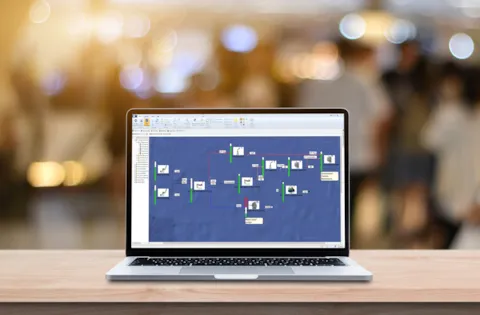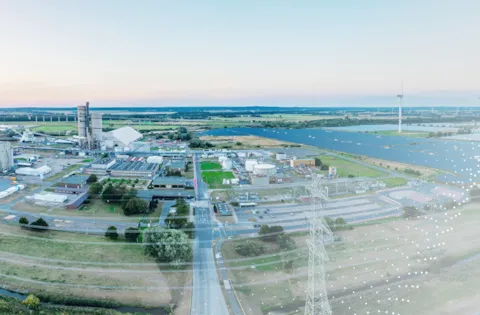

Comprehensive solution to meet complex requirements
Improving process unit reliability and optimizing asset management are ways to increase unit and plant utilization. For large and complex plants this is not a trivial task. Add to the equation the desire to minimize tank sizes and inventories, and the challenge becomes even greater. Taro has been specifically developed for the modelling of complex networks, such as those found in refining and petrochemical plants. The production efficiency in these plants is a complex interaction between reliability, blending and yield rules, flow routing and intermediate storage options etc.
Improve and accelerate decision making
When making decisions for capital expenditures, modifications or adjusting operations and maintenance strategies, accurately assessing their full impact can be challenging. Taro offers comprehensive analysis to assist in guiding strategic decisions, including variability of products due to market requirements, variability of feedstock, storage optimization, and debottlenecking efforts.
Connect the supply chain
Transportation logistics of feeds, final products and sometimes of intermediate streams is commonly found in the energy and process industries. Therefore, a RAM analysis often needs to consider these issues, either at a high level (when the focus of the analysis is elsewhere) or in detail. By studying performance results and how they respond to altering specific parameters in the design or its logistics, it is possible to optimize the system with respect to given constraints.
Transforming data into actionable insights
Whether it is the annual distribution of production availability, system production availability and utilizations, criticality ranking or contribution to shutdowns, DNV RAM tools provide all the insights that enable risk quantification and data-driven decisions to align plant performance with operational and financial goals.
Frequently asked questions
|
The simulation process in Taro can be applied at any stage of the energy or process industry asset lifecycle: from the optimizing equipment configuration in the conceptual phase to supporting a business plan in the operational phase. It is recommended to start the process early in the project lifecycle, ideally at concept screening/pre-feed, (or FEL 1-2). This model can then be moved into the different stages of the project lifecycle. |
|
The primary performance indicator is commonly the network production efficiency. Taro Refinery can provide decision support for a large range of production-related optimizations, for example, identifying systems constraints and quantifying drivers for system downtime. It also provides a range of results such as criticality, buffer statistics, unit production and outage. |
|
Taro can answer key questions related to bottlenecks and reliability constraints in petrochemical plant processes. The key modelling opportunity offered by Taro is the ability to account for the system dynamics. The scalability of Taro allows analysts to build up models of any size, from specific assets to entire country-wide supply chains. This empowers analysts to understand the reasons for transports arriving late compared to schedule or storage tanks bottoming out because of lack of supply. In addition, for shipping fleet and cargo size, the optimum usage requirements for berthing and other logistical constraints can be dimensioned appropriately to meet target efficiency levels. More importantly, the annual delivery plan (ADP) can be assessed for its feasibility and be modified. |
|
The net present value (NPV) allows comparisons to be made between different projects by using all the cash flows from the project and adjusting them to their present values by applying the appropriate discount factor. The projects then become directly comparable on an NPV basis. The NPV graph produced displays various factors (depending on the type of NPV chosen) for each time interval of the system life. Taro will also calculate the expenditure on feedstock buy-in and the revenue for all products defined with a price. |
|
System safety and reliability are key challenges to achieving operational excellence. Frequent downtime in a processing facility can cause serious problems and may lead to higher maintenance costs. Worse still, it may lead to property damage, an increase in the likelihood of injuries and fatalities, and a loss of both stakeholder and public trust. The aim should be to minimize the frequency and consequences of events that not only disrupt the smooth flow of operations, but also pose significant safety and environmental risks. |
|
Maros Lite is a cost-effective and entry-level RAM analysis tool for basic reliability engineering studies and reliability modelling to represent real life scenarios, allowing you to analyse and improve production efficiency. |
Product information

Product videos
Watch our product videos to learn what our software can do for your company.

Recorded webinars
Watch our software webinars.

Training
Find a course that suits your needs.

Knowledge and support
Download latest versions, learn what's new and search the help library.
Discover applications of our software

Navigating hydrogen challenges in RAM analysis
Discover how RAM analysis software can simulate hydrogen asset performance and enable increased production availability.
Related products

Maros
Advanced RAM simulation for energy sector
Sensitivity Manager
Maros and Taro add-on
